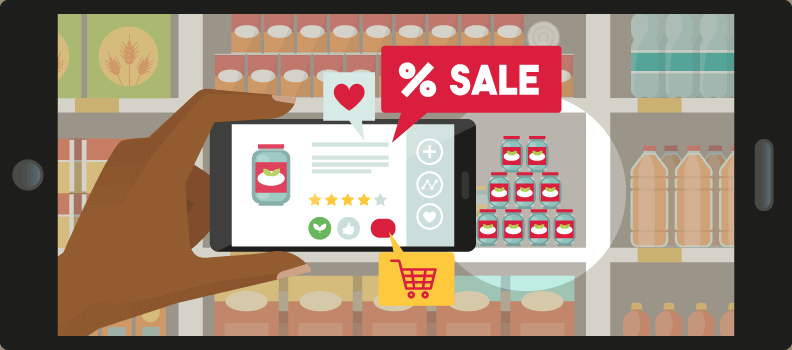When you are newer to sales your role may seem overwhelming. Sure, you understand that your job is to sell your company’s products and services to customers, but you wonder…
Where are these customers coming from?
Do I need to find them?
How do I even know if they’re interested in making a purchase?
Today, we’re going to take you through the answers to these questions—and a few more. First, we’ll start by talking about what is a lead. Next, we’ll discuss lead pipelines—what they are, and how they work. And finally, we’ll talk about how you can add fresh prospects to your pipeline as well as how to handle some common sales pipeline issues.
Ready? Let’s dig in.
What is a lead?
A lead may also be called a prospect or a potential customer. That said, not every lead is going to be interested in your specific products or services. But! Every lead WILL be part of your sales pipeline.
The way leads enter your pipeline is a good indication of how you can further categorize them, enabling you to adjust your sales strategy accordingly.

Cold leads
These are individuals that have never connected with your company, nor have they demonstrated a keen interest in your specific products or services. They require a large amount of education and nurturing before they result in a sale.

Warm leads
People who have shown interest in your products and services—maybe by signing up for your email list at a conference or filling out an online form to receive your newsletter—is a warm lead. They are not yet qualified.

Hot leads
These individuals meet your company’s criteria for being a qualified lead. For most organizations, this requires the individual to meet your budgetary qualifications, has a need for your product or service, has the authority to sign off on the sale, and is looking to act on a purchase within a specific time frame.
What is a sales pipeline?
Now that you are in sales, you’ve likely heard the term “pipeline” thrown around a lot. A pipeline in sales is about much more than a list of leads. It refers to where your leads fall within your sales process.
So, when you hear the term, “healthy pipeline” that means you have a variety of sales leads—cold, warm, and hot. But you can’t know if your pipeline is healthy simply by looking at it. You—or your company—should set trackable metrics that can give you a clear picture of your sales pipeline whenever you look at your CRM.
Finding prospects for your sales pipeline
Your company may already have a marketing strategy designed to attract leads. And these leads can be sent to you to make contact with. Alternatively, you may need to find leads on your own and there are a few ways you can succeed at adding to your pipeline in sales:

Company websites
Most businesses list their staff members as well as how to get in touch with them, either by phone or email. Using a search tool, you can discover businesses within a specific industry that may be in need of your products or services.

Social media
It’s no longer a way to simply stay up to date on the lives of friends or relatives. Social media also allows you to find potential prospects through searching specific keywords or by adding value to conversations taking place within groups.

Purchase a list
Buying a list of contacts from a reputable big data company can help you make contact with targeted leads that may be interested in your specific products or services.
As you can see, adding leads to your sales pipeline can be as tedious or as expeditious as you decide. But ultimately, you need to form strong connections with leads in order to close sales.
Improve your sales pipeline
Understanding where your leads are coming from, how long (on average) they remain cold, warm, or hot, and even the average sale per customer can help you determine where you may need to focus more attention along your sales pipeline. Here are three popular examples of problems that occur within a sales pipeline:
- I have a lot of cold leads, but I’m having trouble converting them into warm leads.
Remember, cold leads have never heard of you, your products, or your services. They may or may need even need your products or services. Don’t be discouraged by a lack of response. On average, it takes 5+ touches before you convert the sale. Touches may be defined as phone calls, email, direct mail, and even online advertising.
- Cold leads ARE responding—and they want me to remove them from my prospect list.
Consider the way in which you are initially connecting with these individuals who have never heard from you before. Instead of reaching out with a sales pitch or a bland, “I just wanted to say hello” type of message, try reaching out with educational assets or collateral about your products and services. Demonstrate your expertise in the hopes that if/when this lead is in need of what you sell, they come to you.
- People are interested in what I’m selling, but they don’t need it right now.
You can’t force people to buy from you. But that’s not your job. Being there for your customers, is. Rather than giving up on a warm lead because they won’t be an immediate sale, continue to nurture them. Reach out every few weeks with a new asset and see if they’ve had new questions pop up about your product or service. Treat customers as more than a dollar sign and know that doing so will lead to more sales in the long run.
Truthfully, creating a healthy pipeline of leads takes a lot of work on the front end. But the good news is that once you or your business finds a rhythm that works, maintaining your sales pipeline doesn’t need to be overwhelming.






